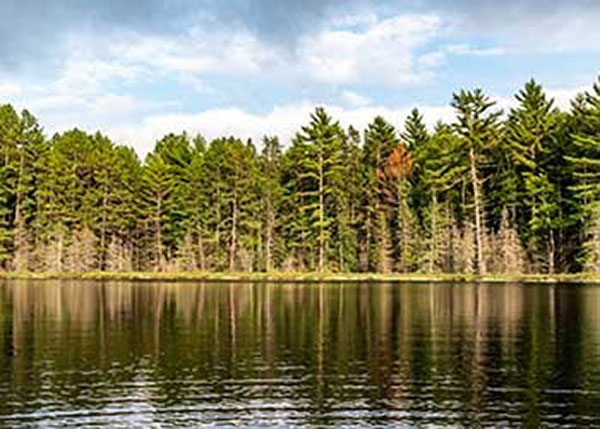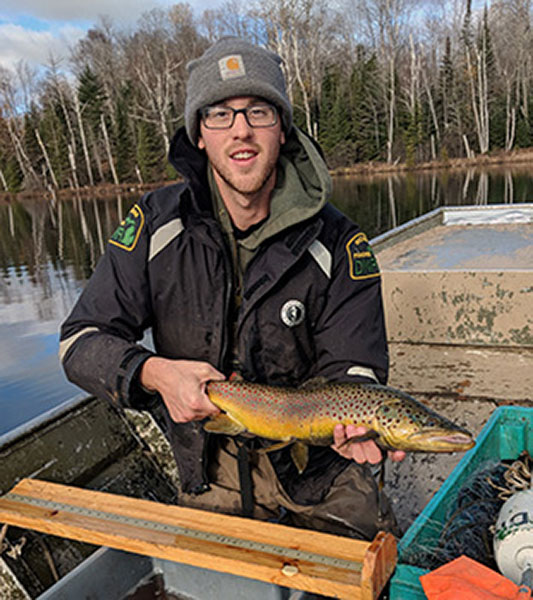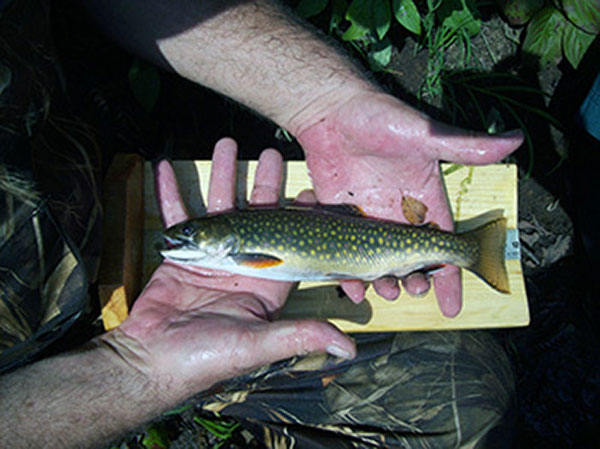By JOHN BAUMAN, Michigan DNR
 Trout lake
Trout lake
The Michigan DNR manages many inland lakes in the Upper Peninsula for brook, brown and rainbow trout.
These trout lakes - less than 100 acres each - are often considered small compared with other inland lakes.
Depending on the lake, various regulations are in effect for anglers hoping to catch trout. In some of these lakes, anglers are restricted to the use of only artificial lures or all tackle is permitted, except minnows. On other lakes, all tackle is allowed.
Again, depending on the lake - designated by letters A through D in the Michigan Fishing Guide - there are minimum size limits for trout, ranging between 8 and 15 inches. There are also seasonal restrictions on some lakes, while others are open year- round.
These regulation variations provide anglers with diverse fishing opportunities.
"Many of these small inland lakes are also remote and provide an exceptional wilderness experience," said Darren Kramer, a DNR fisheries biologist in Escanaba. "For example, a series of remote wilderness lakes located in Alger County have been managed for brook trout since the 1950s."
The remote wilderness aspect of many of these lakes presents challenges for DNR fisheries biologists seeking to monitor anglers' use of these waters.
 DNR Biologist"A principal component of fisheries management includes evaluating fish stocking programs using established fisheries criteria that, when met, help justify costs associated with stocking and ensure resources are utilized for their intended purpose," said Jen Johnson, a DNR fisheries biologist in Norway. "Trout program evaluations can be accomplished by considering biological, economic and social criteria in line with DNR Fisheries Division policy and recommended stocking guidelines."
DNR Biologist"A principal component of fisheries management includes evaluating fish stocking programs using established fisheries criteria that, when met, help justify costs associated with stocking and ensure resources are utilized for their intended purpose," said Jen Johnson, a DNR fisheries biologist in Norway. "Trout program evaluations can be accomplished by considering biological, economic and social criteria in line with DNR Fisheries Division policy and recommended stocking guidelines."
For evaluating trout-stocking measures on these remote wilderness lakes, DNR fisheries personnel use several methods.
Determining biological criteria requires gathering information on trout abundance, growth, survival and water temperature and is typically accomplished using netting surveys.
Social criteria are assessed by talking with anglers about the quality of their catch, accessibility of fishing sites and whether they are generally satisfied with the fishery provided. Web-based surveys have also been helpful in gathering reliable information about anglers' overall satisfaction with lakes the DNR has stocked with trout.
Economic criteria include comparing the amount of angler use of the remote lakes, or number of angler trips, to the general cost of stocking trout in these locations.
"Remote wilderness lakes stocked with trout are typically difficult to access, and funding resources are not available to monitor all of these lakes using creel clerks," said DNR fisheries biologist Cory Kovacs in Newberry.
Creel clerks are staffers who talk with anglers, collecting valuable information that helps the DNR make decisions about managing Michigan's fisheries, at less remote fishing locations around the state.
"Therefore, DNR Fisheries Division staffers are routinely deploying trail cameras to monitor these waterbodies to ensure resources are being utilized and a continuation in stocking is justified," Kovacs said.
Trail cameras are also known as game cameras, are remote motion-activated cameras often used by hunters to scout game. These cameras are providing valuable information about the number of trips anglers are taking to these remote lakes, in addition to the time spent on each lake.
The use of trail cameras has also provided useful information for fisheries biologists by documenting the presence and abundance of predatory bird species, like great blue herons, osprey and bald eagles. This helps ensure numbers of trout stocked sufficiently counter the amount of fish preyed on by these birds.
In some cases, anglers themselves may also use hunting tools to aid them in fishing these remote locations. Specifically, the DNR's Mi-HUNT application depicts Michigan's landscape in detailed, layered geographic information systems maps and satellite photographs.
 Assessing trout lakes
Assessing trout lakes
These maps and photographs can show the presence of trails, campgrounds and parking areas that can help anglers find and access these remote lakes.
In addition, the DNR's website provides a wealth of information on fishing, including a database showing fish stocking locations, dates, types of fish and number and size of fish stocked.
The website also provides a collection of 2,700 DNR maps of Michigan lakes that show water depths, shorelines and some additional features, like roads or access points.
There is also a good deal more information on Michigan fish species, tactics and more at Michigan.gov/Fishing.
A journey to an inland trout lake in the U.P. is a great opportunity to enjoy a wilderness experience amid remote and rugged scenery. The experience you gather on your trip will likely be memorable and may inspire future outings. It may also contribute to future DNR trout stocking and assessment efforts.





